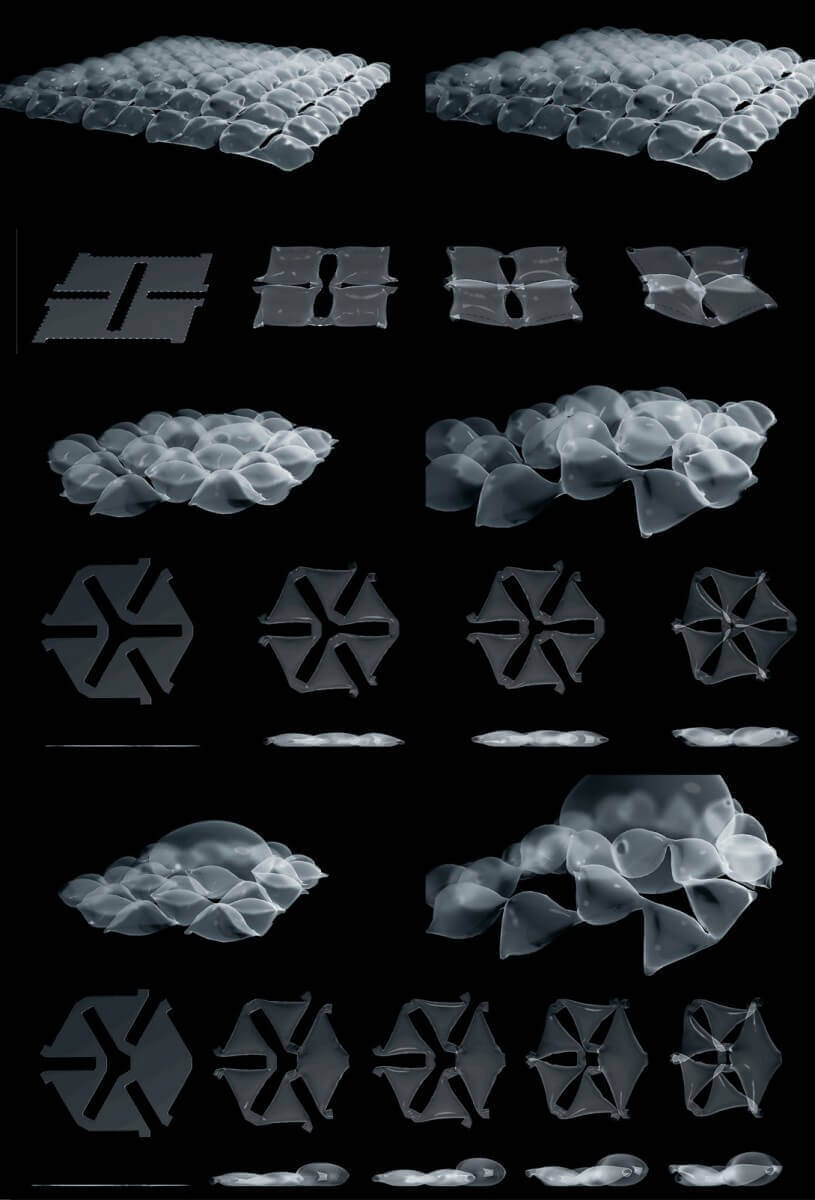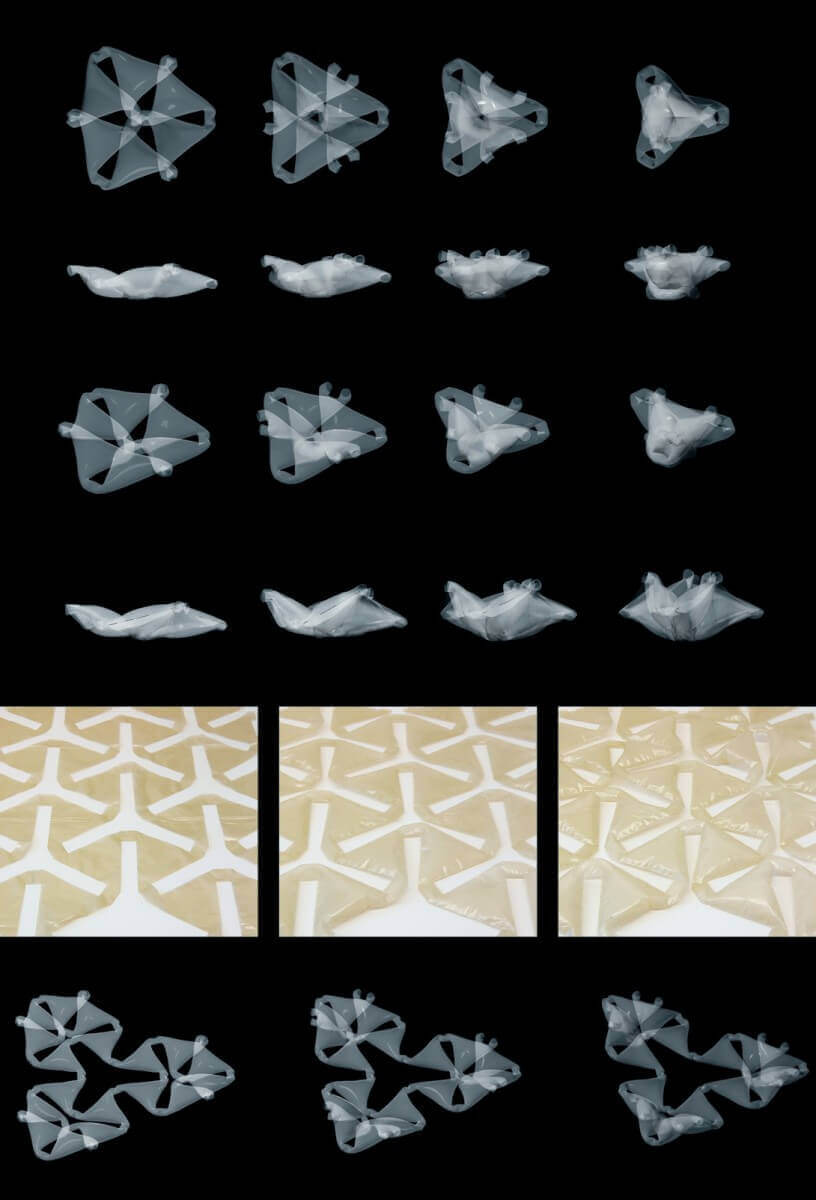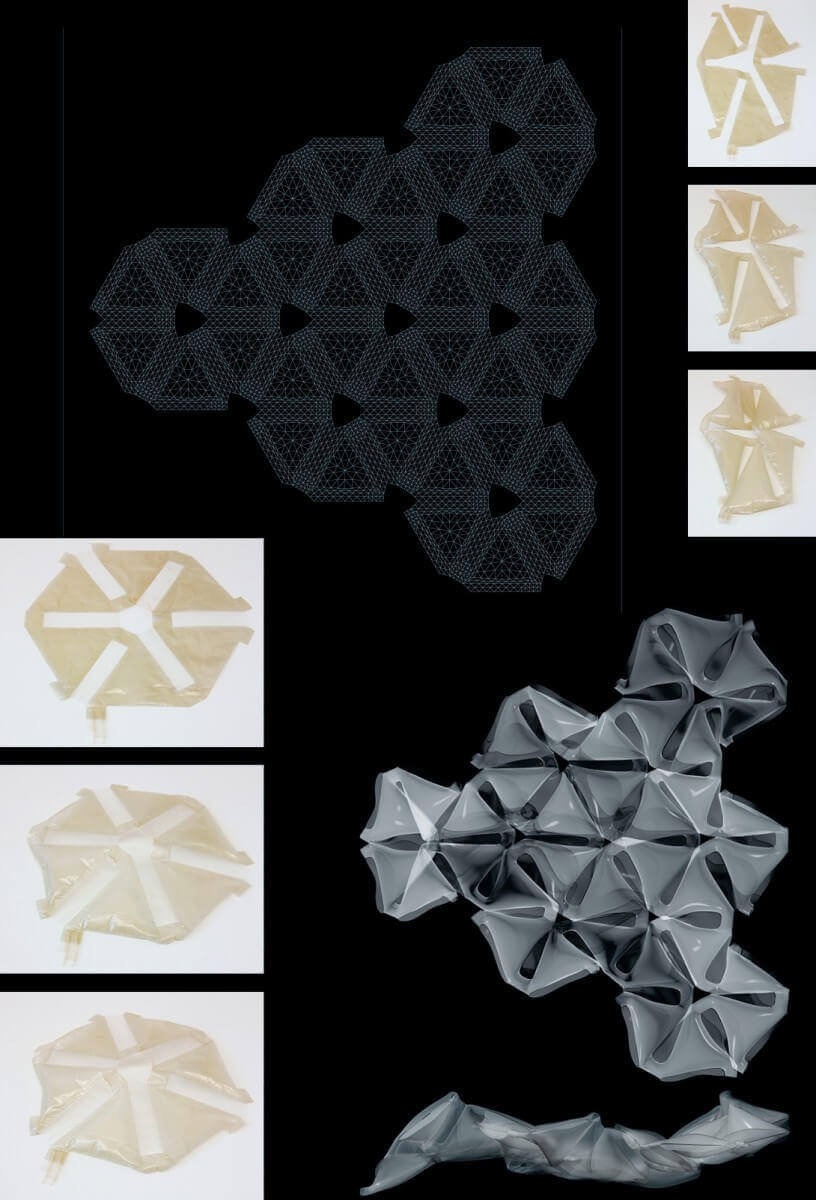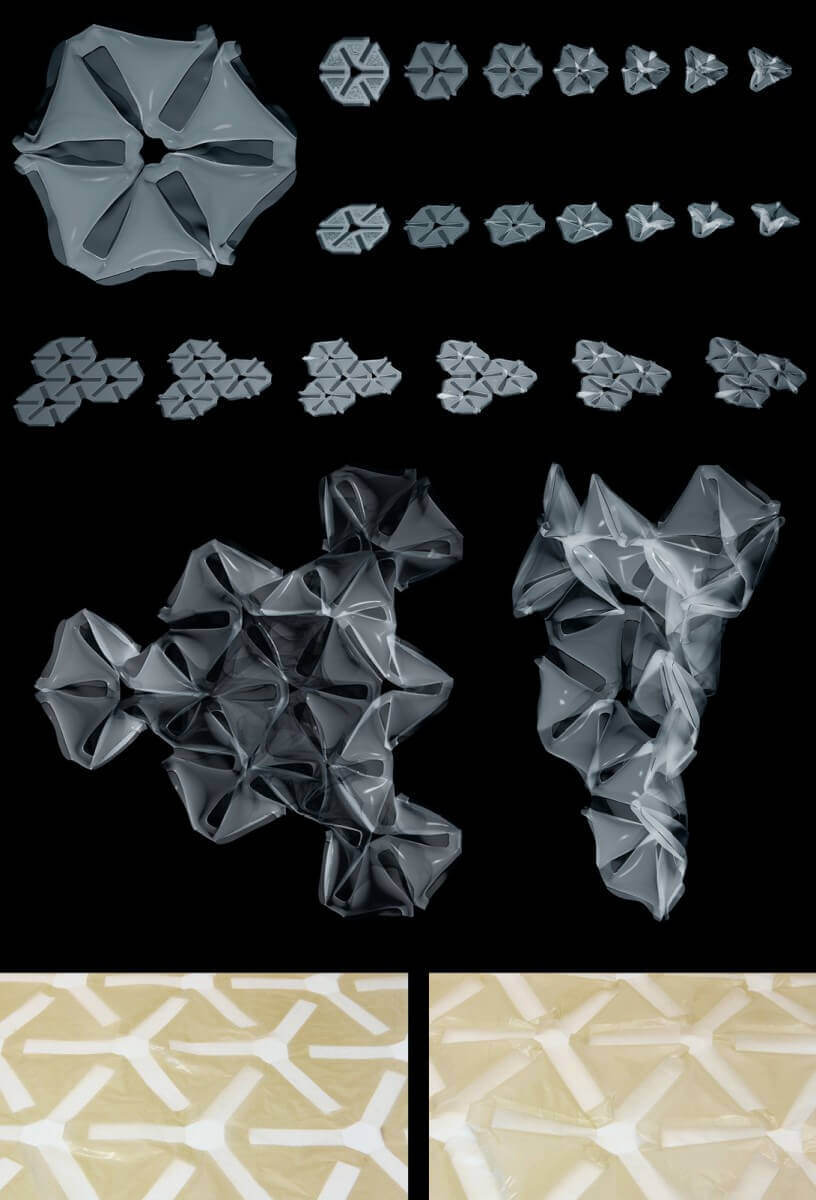The research is immensely inspired by Thomas Herzog’s seminal work Pneumatische Konstruktionen/Bauten aus Membranen und Luft. The purpose of the seminar is two-fold; on the one hand it addresses the concept of small scale inflatable components that when properly designed and arranged lead to new large scale lightweight structures, second it is a convenient platform to engage a small group of highly motivated Master and Diploma students in fine tuning their computational and geometrical analysis skills.
Most known pneumatic structures rely on large and sturdy envelops or large sections to build up the final hull. Few envelops exemplify the concept of micro pneumatic elements used to generate a large hull. The use of smaller individual units could permit a certain number of units to collapse without pulling down the entire structure as is the case in large balloon type hull. Another aspect is the potential for locally informing the components to react to certain environment situations, such as solar, wind, media, etc.
The seminar reviews Herzog’s work and pitches recent 2d digitally fabricated pattern studies produced by Haresh Lalvani to explore pinwheel motions in flat polygons which when stretched generate complex 3d surfaces. The students investigate patterns suitable for study on a larger scale. The shapes must be developable, as in: flat when at rest. This is an important factor in the design and fabrication process. We are inflating 2d shapes welded at their edges; this is very similar to the work and research produced by Oscar Zieta with sheet metal and water pressure.
To explore these concepts we have developed a Rhino ® Grasshopper and Kangaroo physics script capable of iteratively controlling mesh refinement, pseudo material properties (as we are currently limited to a mass springs solver) and physical forces (such as air pressure and gravity to name a few).
Parallel to the digital models the students build analogue prototypes to check against their simulation results. This has lead to intense research in mesh optimization theories to arrive at clean initial mesh setups. Ideally we would want a mesh membrane based algorithm capable of CHARMS and this is a future area of study on this topic.
The students have managed to develop new types of micro pneumatic structures using flexible and stiff materials to control the deformation process of the membrane under pressure. Furthermore they have demonstrated that geometry and materiality on the macro and micro level plays a role in how the shapes can be controlled without pre-forming the surfaces or adding support structure.
Currently we are working in cooperation with Pfaff Industries to digitally mass produce the prototypes with ultra-sonic welding devices. This type of technology allows us to bond a variety of multi-ply materials and valves.
The next step is to use the research to propose a pavilion for the Trienal de Arquitectura de Lisboa and publish the preliminary research results of the ongoing research project.





